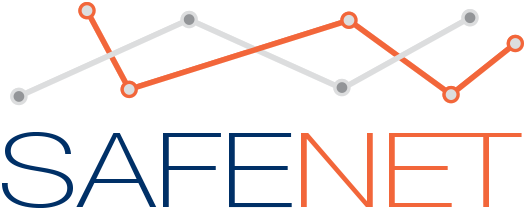SEMS: South-East European Messaging System
Background info:
The South-East European Messaging System (SEMS) has a long history and has become a mature software package. Following the experiences gained from the PAIS (Pre Arrival Information System), which was in use in late ‘90s, SEMS was initially developed during 2000 by the IT Support of the CAFAO Programme (Customs And Fiscal Assistant Office in the Western Balkans), which was funded, at that time, by the European Commission DG AIDCO A2.
SEMS was accepted by SECI (South-East Europe Cooperation Initiative) Member States as standard form for the exchange of operational exercise data. The first successful region-wide implementation of the system, were the projects “Bulldog I” and “Bulldog II”.
At Regional Law Enforcement Conferences (Ohrid 2004 and Tirana 2005) SEMS was accepted by the Customs Administrations in Western Balkan Region as a tool for exchange of pre-arrival information. The most successful implementation of this software version was the Danube River Early Warning System (DREWS). This project covered the exchange of pre-arrival information regarding vessel traffic on the Danube River passing through Croatia, Hungary and Serbia.
Description of application:
SEMS (South-Eeast European Messaging System) is primarily a tool for secure and real time exchange of data. In other words, it is an early warning system, which can be easily customized for exchanging practically any type of information. SEMS can also be used for many other purposes, for instance, as a tool for the collection of data for selectivity, risk assessment and targeting. It enables Customs Administrations to focus their resources (namely, human, financial and time resources) on the high risk areas.
SEMS enables quicker clearance at the borders and a safer road, railway, river and sea traffic. SEMS contributes to the enhancement of Integrated Border Management – permanent co-operation between border authorities (Customs, Border Police, etc.), as well as cooperation between Administration (Customs, Tax, etc.) departments.
Handling SEMS is simple; whoever has had any experience with any e-mail software (mail client) will not have difficulty in becoming familiar with SEMS. SEMS has a built in translation feature which makes it available in practically any language or script, e.g. message sent from Italy in Italian will be received in Serbia in Serbian.
Technical Details:
Initial version of SEMS was written in MS VBA (Microsoft Visual Basic for Applications) with Microsoft Access as RDMBS and used Microsoft Outlook as the mail client for sending and receiving of messages.
SEMS has been continuously updated using the newer versions of the MS Office package (up to Office 2003). Many new software features have been added, one of the major changes was an integrated mail client, while Microsoft Outlook remained an option.
Following the success of the DREWS Project during the first half of 2007, the CAFAO IT Team developed a NEW SEMS application. It was client-server stand alone application, developed using the latest software development tools. As many users have become more familiar with the SEMS forms, the CAFAO IT Team decided to keep the layout of the SEMS forms and Templates. The new application inherited all the good features from the previous software versions and brought many new advantages: NEW SEMS included more secure communication facilities, which means that messages, together with any attachment sent by SEMS were double encrypted. NEW SEMS RDBMS database engine was MS SQL 2005, which made SEMS data available for easy import or analysis to practically any other application. Each Administration could create a central SEMS database and import data received by SEMS into their own Information System.
The last version of the SEMS application became a module of the SEED software package, and is written in:
- Programming language: C#
- DBMS independent (so far tested with PostgreSQL and Microsoft SQL Server 2005/2008)
- Application Server: Internet Information Services v 6.0
- Operating system: Microsoft Windows Server 2003 / Microsoft Windows XP (or later)
Communication module is Open ESB:
- Programming language: JAVA
- Application Server: GlassFish 2.2
- DBMS: Microsoft SQL Server 2005/2008
- Application Server: GlassFish 2.2
- Operating system independent (tested with Microsoft Windows Server 2003 / Microsoft Windows XP (and later)
References:
- SEMS – SECI
SECI Member States have used the SEMS as a tool for the exchange of operational exercise data, through the “Bulldog I” and “Bulldog II” Projects. These Projects have now been completed.
- SEMS – DREWS
The most successful implementation of the SEMS is the Danube River Early Warning System (DREWS). It is system for the exchange of pre-arrival information relating to vessels and cargo on the Danube River. The Project was initiated by EU CAFAO Serbia and the Customs Administration of Serbia in the spring of 2005. After the signing of a Memorandum of Understanding between Croatian, Hungarian and Serbian Customs Administrations in June 2005, a pilot project was launched. Three Danube ports started to exchange pre-arrival information: Bezdan (SRB), Mohacs (HUN) and Vukovar (CRO), while the system was supervised by Operational Centres in Belgrade, Budapest and Zagreb. In November 2006, the system was enlarged to incorporate all Danube Ports in Serbia and the application software was replaced by the NEW SEMS (DREWS) software – Version 2.0. In total, 23 locations were involved:
- Croatia: Vukovar port & Zagreb HQ
- Hungary: Mohacs port & Budapest HQ
- Serbia: all 12 ports/Customs Stations; 5 field Anti Smuggling Offices; Head of River Mobile Team; Head of Anti Smuggling Department
- SEMS – Airport
This project was launched in the summer of 2005, at the Regional Enforcement Conference held in Tirana. SEMS was accepted by all the participating Customs Administrations as a tool for exchange of pre-arrival information and each Customs Administrations selected an airport for a trial exercise. The EU CAFAO IT Team prepared the software and User Guides and delivered these to the Beneficiaries. SEMS was installed in a number of the selected airports.
- SEMS – Railway
This project was launched within Customs Administration of Serbia. At the beginning of 2007, SEMS was installed at four Railway Customs Stations: Belgrade, Dimitrovgrad, Sid and Subotica.
As the control of Railway traffic is regarded as one of the ‘highest Risk Areas’ in the Western Balkans, a number of Regional Customs Administrations (namely Croatia, Montenegro, FYRoM) were also expressed an interest in participating in SEMS-Railway.
- SEMS – Adriatic Plus
An Introductory Meeting took place at the beginning of July in Podgorica (Montenegro), and the represented Customs Administrations (Albania, B&H, Croatia, Montenegro and UNMIK/Kosovo) expressed an interest in participating.
As the “Eastern” Adriatic Ports are mainly destination ports, it is important that ports of departure in Italy, Greece, Slovenia (and Malta) take part in this Project. Pre-arrival information received in electronic editable form from the “other side” of the Adriatic are very useful to the Beneficiaries.
Based on the available information, the traffic between the Adriatic ports (on the Eastern coastline) is not considered to be particularly busy. Cargo is generally transiting through the ports to the final destinations. Pre-arrival information sent from the Adriatic Ports to the final destinations would be very useful for the “connecting administrations” (B&H, FYRoM, Hungary, Serbia etc.). For this reason the Project is named “SEMS – Adriatic Plus”, it is the Project about exchange of information between Adriatic Ports and the goods transiting and clearing through these ports.
- SEMS – Macedonia
Customs Administration of Macedonia is still using SEMS software for in-house dissemination of intelligence between HQ and all Customs Stations throughout the country.
- SEMS – MAPS
This was also one of proposed initiatives of using SEMS as a tool for Manifest Automated Processing System (MAPS). Information regarding passengers, vehicles and goods travelling on the “Adriatic” Ferries will be sent by Ferry Operators to the Customs via SEMS. The majority of Ferry Companies are connecting Italy with the Adriatic Ports on the Balkans’ coastline (in Albania, Montenegro and Croatia). Montenegro Customs have already expressed an interest in participating in this Project and preliminary meetings have already been made with the Ferry Companies and more are planned for the near future.



 Bosanski
Bosanski